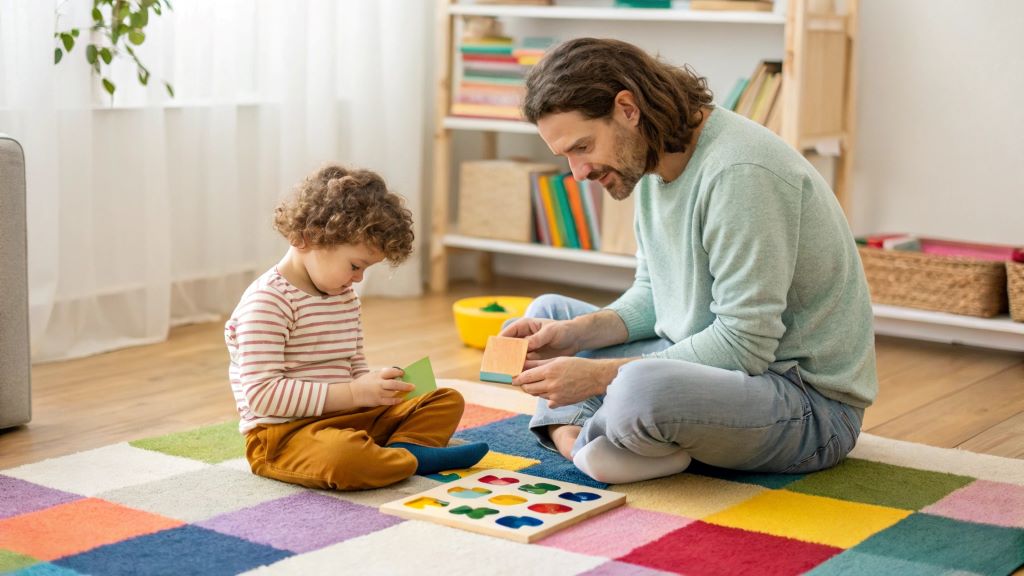Introduction: Why Phonics Matters More Than Ever
Teaching kids phonics is not just about helping them learn to read—it’s about giving them the tools to decode language, build confidence, and unlock a lifelong love for learning. According to a 2023 study by the National Institute of Literacy, children who receive early phonics instruction are twice as likely to excel in reading comprehension by the third grade. Yet, many parents feel overwhelmed when it comes to teaching phonics at home. Understanding how to teach kids phonics at home can empower parents to create engaging, structured lessons that make learning both effective and enjoyable.
The good news? You don’t need to be a certified teacher to teach phonics effectively. With the right strategies, resources, and mindset, you can transform your home into a vibrant learning hub. In this article, we’ll dive deep into everything you need to know about teaching phonics at home, from understanding its importance to implementing hands-on activities that work.
Section 1: What Is Phonics and Why Should You Care?
Understanding Phonics
Phonics is the method of teaching reading and writing by developing learners’ phonemic awareness—the ability to hear, identify, and manipulate sounds (phonemes) in spoken words. It connects these sounds to their corresponding letters or groups of letters (graphemes). For example, the letter “b” makes the /b/ sound, while the digraph “sh” makes the /sh/ sound.
Why Phonics Is Essential
- Scientific Backing : A report published in Reading Research Quarterly (2022) highlights that systematic phonics instruction significantly improves word recognition and spelling skills.
- Building Blocks of Literacy : Phonics lays the foundation for decoding unfamiliar words, which is crucial for transitioning from “learning to read” to “reading to learn.”
- Equity in Education : Phonics levels the playing field for children from diverse linguistic backgrounds, ensuring no child is left behind.
What Happens Without Phonics?
Children who lack phonics instruction often struggle with reading fluency and comprehension. They may rely on memorization rather than decoding skills, which limits their ability to tackle new vocabulary. This gap can widen over time, leading to frustration and disengagement.
Section 2: Setting Up Your Home for Phonics Success
Before diving into lessons, it’s important to create an environment conducive to learning. Here’s how:
Create a Dedicated Learning Space
Designate a quiet, well-lit area free from distractions. Stock it with essential materials like flashcards, whiteboards, magnetic letters, and age-appropriate books.
Gather the Right Tools
Invest in high-quality resources such as:
- Interactive apps like Homer and Teach Your Monster to Read
- Workbooks like “Jolly Phonics” or “Hooked on Phonics”
- Audio resources like rhyming songs and storytelling podcasts
Set Realistic Goals
Break down the learning process into manageable chunks. For instance, start with single-letter sounds before moving on to blends and digraphs.
Section 3: Step-by-Step Phonics Instruction for Beginners

Stage 1: Introducing Letter Sounds
Start with the basics—individual letter sounds. Use multisensory techniques to engage all senses:
- Visual Cues : Show pictures of objects starting with each sound (e.g., apple for /a/, ball for /b/).
- Auditory Practice : Say the sound aloud while pointing to the letter.
- Kinesthetic Activities : Have your child trace letters in sand or air-write them.
Stage 2: Blending Sounds
Once your child knows individual sounds, introduce blending. Start with simple CVC (consonant-vowel-consonant) words like “cat” or “dog.”
- Example Activity : Play “I Spy” using CVC words around the house.
- Tip : Praise effort rather than perfection to boost confidence.
Stage 3: Advanced Concepts
Gradually introduce more complex elements like consonant blends (e.g., “bl,” “st”) and vowel teams (e.g., “ai,” “ou”). Incorporate games and puzzles to keep things engaging.
Section 4: Fun Ways to Reinforce Phonics Skills
Learning doesn’t have to be boring! Here are some creative ideas to make phonics practice enjoyable:
Games That Teach
- Phonics Bingo : Create bingo cards with target sounds instead of numbers.
- Sound Hunt : Hide objects around the house and ask your child to find items matching specific sounds.
Storytime Sessions
Read aloud with expression, emphasizing different sounds. Encourage your child to point out familiar phonics patterns in the text.
Technology Integration
Leverage educational apps and YouTube channels like Alphablocks to supplement traditional methods.
Section 5: Common Challenges and How to Overcome Them
Even with the best intentions, challenges will arise. Let’s address some common hurdles:
Challenge #1: Lack of Focus
Young children often struggle to concentrate. Solution: Keep sessions short (10–15 minutes) and incorporate movement breaks.
Challenge #2: Frustration
If your child gets frustrated, take a step back. Revisit easier concepts to rebuild confidence.
Challenge #3: Limited Resources
Not everyone has access to premium tools. DIY alternatives like homemade flashcards or chalkboard drawings can be just as effective.
Section 6: Pros and Cons of Teaching Phonics at Home
Pros
- Personalized attention tailored to your child’s pace.
- Flexibility to integrate learning into daily routines.
- Cost-effective compared to hiring tutors or enrolling in programs.
Cons
- Requires significant parental involvement and patience.
- Risk of inconsistency if not approached systematically.
- Potential for burnout if expectations are too high.
Section 7: Expert Opinions and Research Insights
Dr. Emily Hanford, author of Sold a Story , argues that explicit phonics instruction is the most reliable way to teach reading. Meanwhile, critics suggest balancing phonics with whole-language approaches. Both perspectives agree on one thing: consistency is key.
A 2023 survey conducted by EdTech Magazine revealed that 85% of educators believe parental involvement is critical for successful literacy development. However, only 40% of parents feel adequately equipped to support their child’s learning journey.
Section 8: Top-Performing Articles and Resources
For further reading, check out these top-performing articles:
- “The Science of Reading” by American Educator
- “How Phonics Can Transform Literacy” by The Guardian
- “10 Must-Have Phonics Apps for Kids” by Common Sense Media
These resources offer valuable insights and practical advice to complement your efforts.
Section 9: FAQs About Teaching Phonics at Home
Q1: At what age should I start teaching phonics?
A: Begin introducing phonics concepts as early as ages 3–4, but adjust based on your child’s readiness and interest.
Q2: How long should each session last?
A: Keep sessions short—10–20 minutes—to match your child’s attention span and avoid burnout.
Q3: Can I teach phonics without prior experience?
A: Yes! With structured programs, online resources, and consistent practice, anyone can teach phonics effectively.
Q4: What if my child struggles with certain sounds?
A: Revisit those sounds through fun activities, songs, or games. Patience and repetition are key to overcoming challenges.
Q5: Is phonics enough for reading success?
A: While phonics is essential, pairing it with comprehension strategies and a love for books ensures well-rounded literacy skills.
Q6: Can phonics help bilingual learners?
A: Absolutely! Phonics builds foundational decoding skills that transfer across languages, especially for English language learners.
Q7: Are apps and technology necessary for teaching phonics?
A: Not mandatory, but they can enhance engagement. Use them as supplements, not replacements, for hands-on learning.
Q8: What if my child loses interest in phonics lessons?
A: Mix up activities with games, storytelling, or outdoor sound hunts to reignite their curiosity and make learning fun again.
Q9: Should I focus on uppercase or lowercase letters first?
A: Start with lowercase letters since they appear more frequently in reading. Introduce uppercase letters later for names and titles.
Q10: How do I know if my child is making progress?
A: Look for milestones like recognizing letter sounds, blending simple words, and attempting to read independently. Celebrate small wins along the way!
Conclusion: Empower Your Child Through Phonics
Teaching phonics at home might seem daunting at first, but with dedication and the right tools, you can set your child up for success. Remember, every small step counts toward building strong literacy skills. So grab those flashcards, fire up those apps, and watch your little learner thrive!
Final Thoughts
By following this guide, you’re not just teaching phonics—you’re nurturing curiosity, resilience, and a lifelong passion for learning. Ready to embark on this rewarding journey? Your child’s future self will thank you!
Read More:





